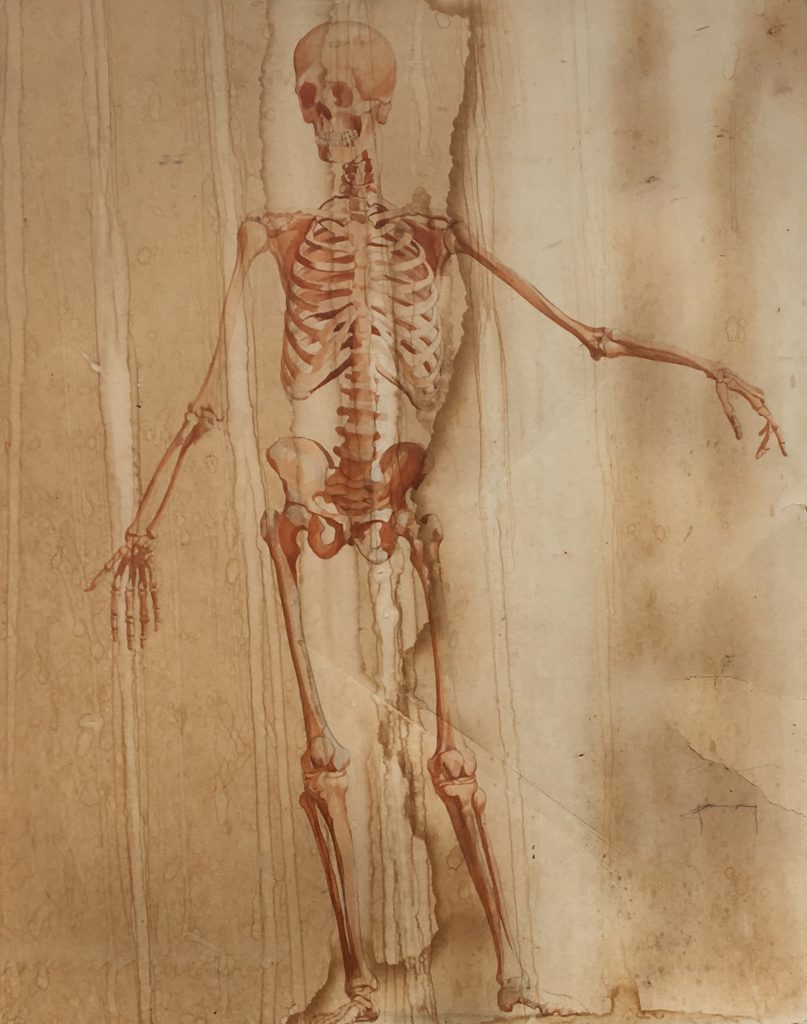
The study of anatomy is a vital part of learning to draw. It accompanies the study of the figure to allow a structural understanding of the shapes, forms, and movement of the figure along with how each articulation is affected by gravity, perspective, and perception.
Understanding these things leads to believable, often beautiful, and perhaps insightful works of art inspired by the human figure and its vast capacity for expression.
Many traditional art academies incorporated the study of anatomy not just in studio from a skeleton but also in conjunction with a medical teaching facility.
Thomas Eakins, one of the most important American Realist painters attended, witnessed, and participated in lectures and dissections at Jefferson Medical College while he was a student. As a professor at the Pennsylvania Academy and Museum he incorporated similar lessons establishing it as part of the curriculum. He created a series of casts of musculature that are still in use today for reference drawing and study.
Although a historic program of study, there was a lapse in implementation. During the 1990’s a few of the PAFA Professors established a new anatomy program inspired by Eakins’ work and teaching. The course of study utilized Hahneman University Hospital only a few blocks away. The short walk from the PAFA museum and studios allowed easy movement for art students to and from anatomy.
As students a small group of us (we had to enter a drawing competition and be voted into this privilege by a committee of faculty) would walk, sketchbooks in hand to draw from the anatomy and dissection classes in the hospital. It was an invaluable experience that for me re-iterated the importance of the spirit to the process. Our drawings were precise, distinct, exacting, yet did not contain the gesture, life-force, or movement that propels a simple drawing into a work of art. The balance between these two things- an understanding of anatomical structure and proportion along with the expression of gesture or life need to be investigated with great sensitivity.
We can see a clear relationship between sound understanding of structures that lie beneath a form, and seemingly effortless patterns of mark making when viewing a portrait painted or sculpted by an artist whose education included anatomy. The work of Eakins and Sargent are examples from the realist period. We can look further back in history to Da Vinci, and Michelangelo; and even further back toward classicism in Greek sculpture to see and understand these vital relationships between study and professional practice.
Please see some of the work below which illustrates the direct relationship between the study of anatomy and sound representation of the figure with an expressive quality that includes spirit, gesture, and life.
This life sized sculpture of John the Baptist by Neo-Classical sculptor Houdon stands in The Borghese Museum in Rome. I first encountered it accidentally as I was viewing the collection as a student on a traveling scholarship. I immediately recognized the pose as I had drawn, painted, and sculpted it in the studios at PAFA from a casting of the ecorche that Houdon created as a preparatory study for the sculpture. The relationship is uncanny, and demonstrates the amount of preparation an artist does as they move through the creative process.
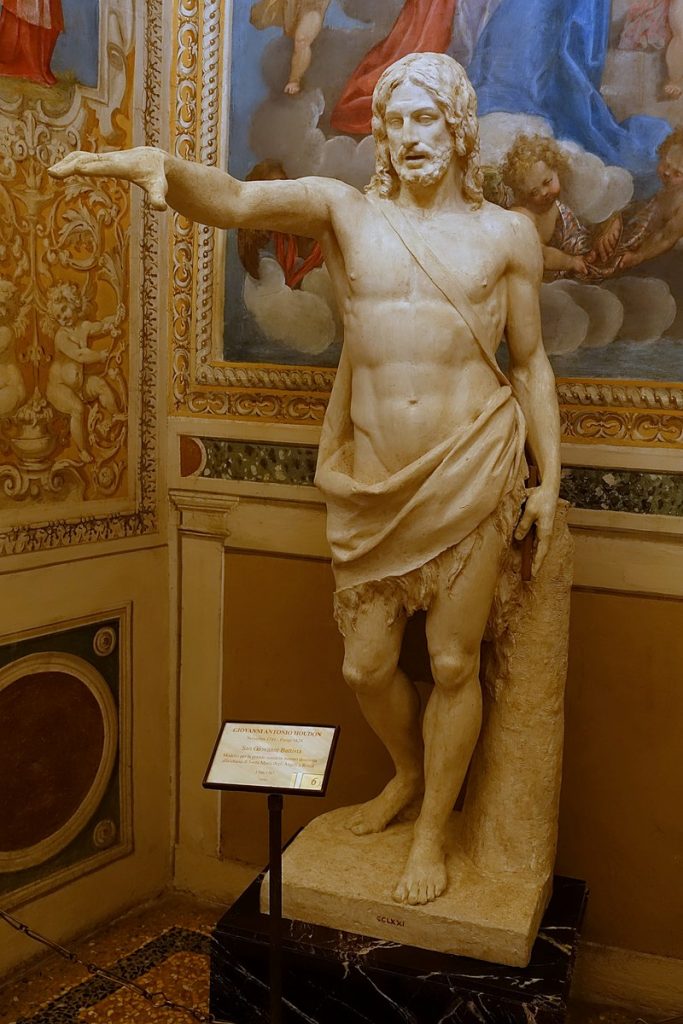
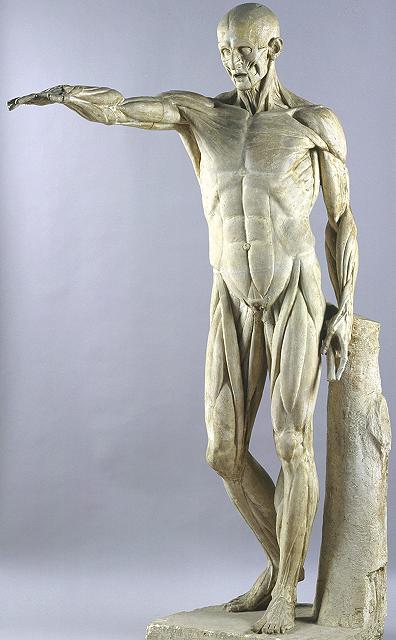
The below image is of a cast made by Thomas Eakins for use as reference by his students. He created a large series of these; some are at the Philadelphia Museum of Art and some are in the collection of the Pennsylvania Academy of Fine Arts. As students, we were allowed to draw from them as part of our anatomical study in conjunction with figure drawing.
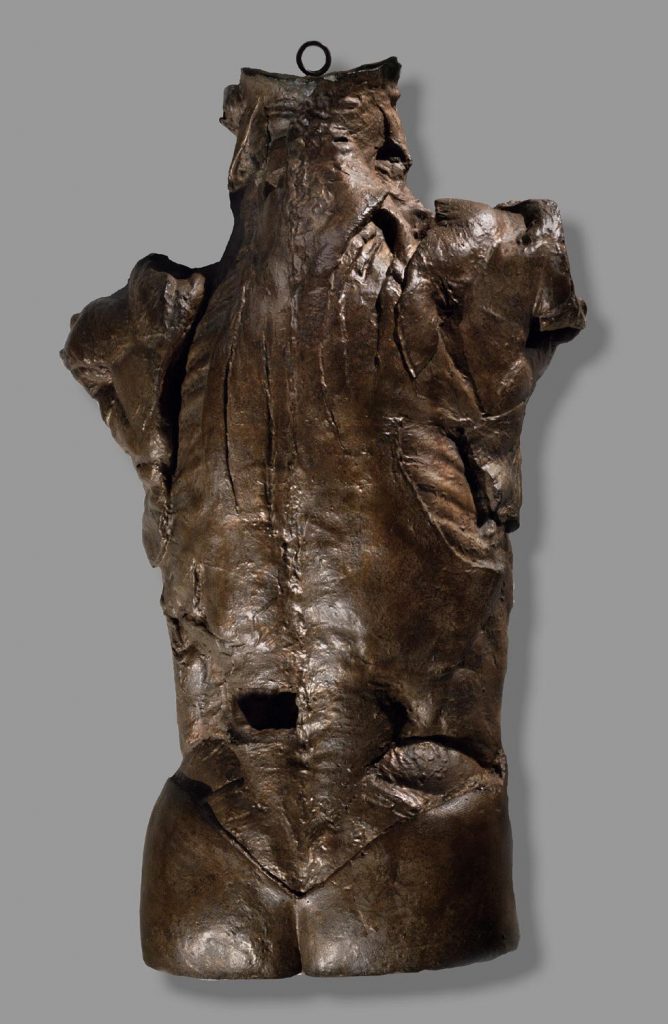
The below oil sketch by Thomas Eakins demonstrates a quick study of the figure in a standing pose and beautifully expresses the structure of the body without reliance on petty details. This manner of expressing form in a general yet informed way comes from a study of the structures that lie beneath the forms. The nude sketch is the next step before painting a clothed figure or portrait. This allows an understanding of the manner in which drapery, fabric and clothing are affected by the forms.
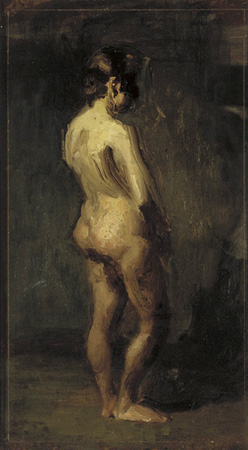
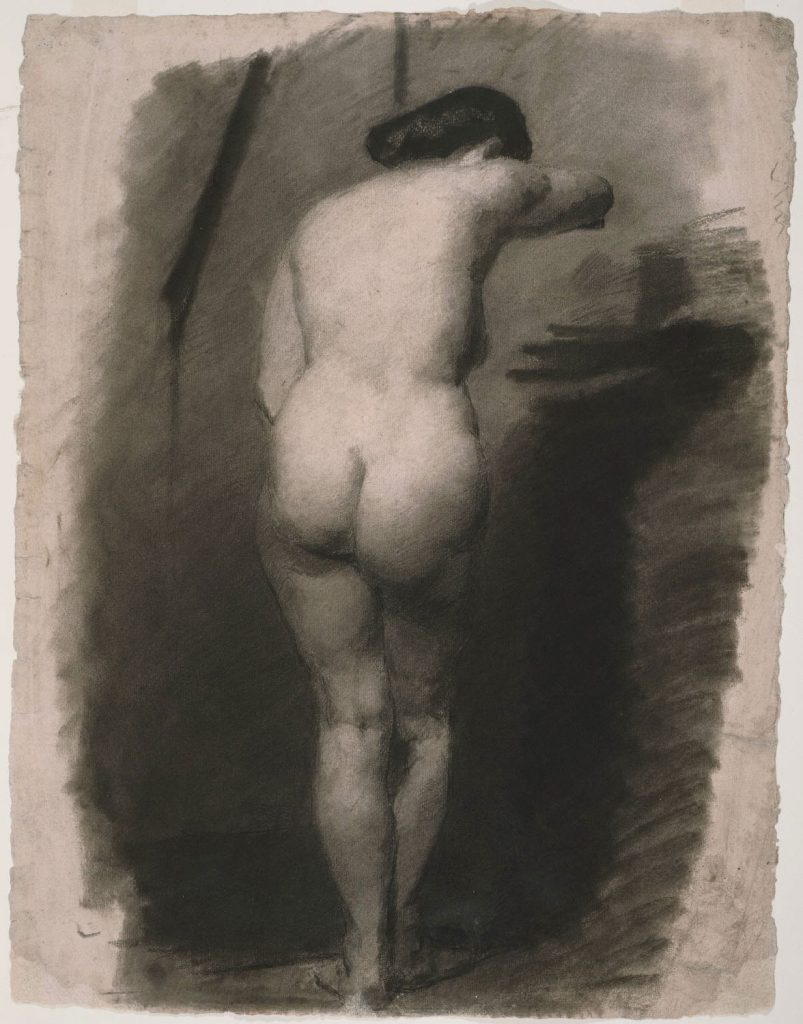
This portrait by Eakins demonstrates mood, countenance, and the spirit of the sitter in addition to other more concrete issues of the figure.
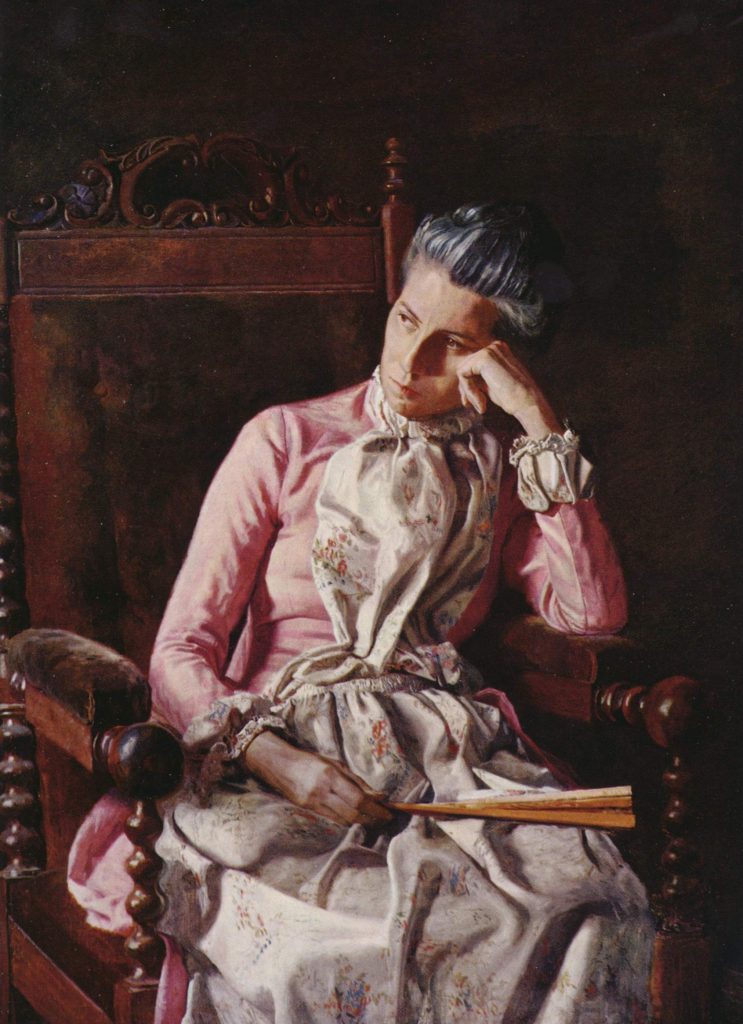
Eakins created two famous paintings of Doctors performing Surgery: The Gross Clinic, and The Agnew Clinic. Both paintings were precededed by a number of preperatory sketches, and created in Philadelphia depicting medical advancements of the time. The works are stunning, enormous, and were unveiled amidst much controversy.
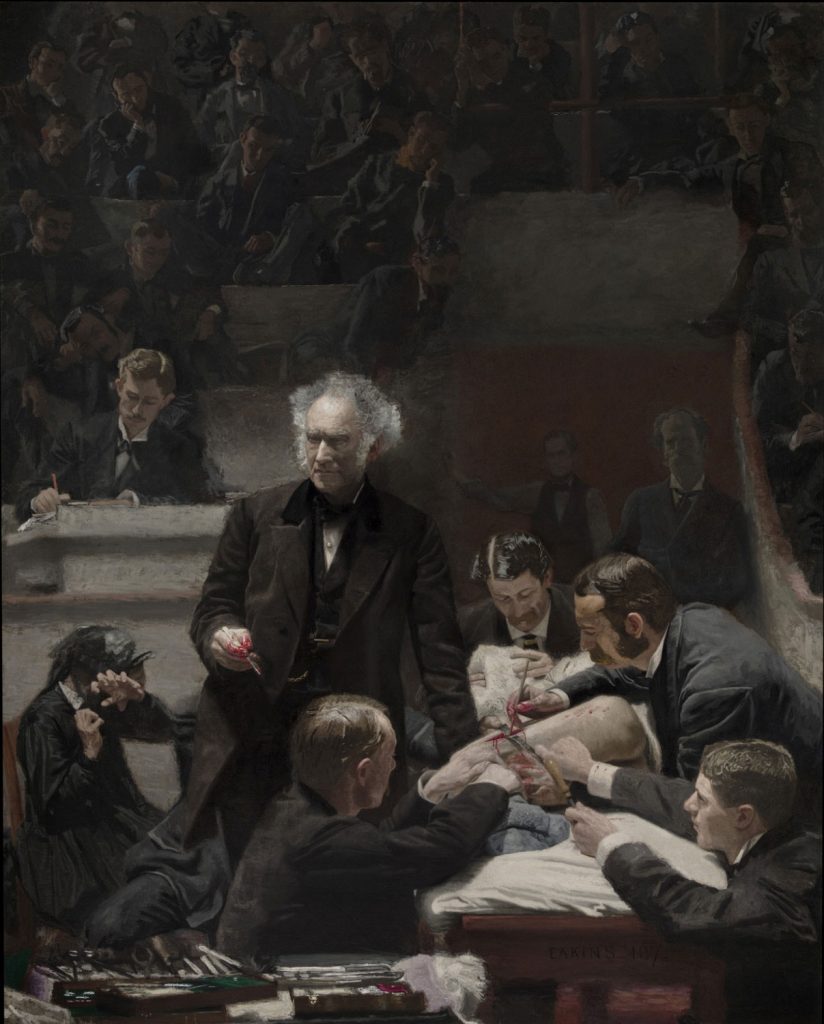
The Agnew Clinic, seen below shows many advancements in science such as the use of antiseptic, as the doctors are now in clean white coats. The work is a masterpiece of composition and painting.
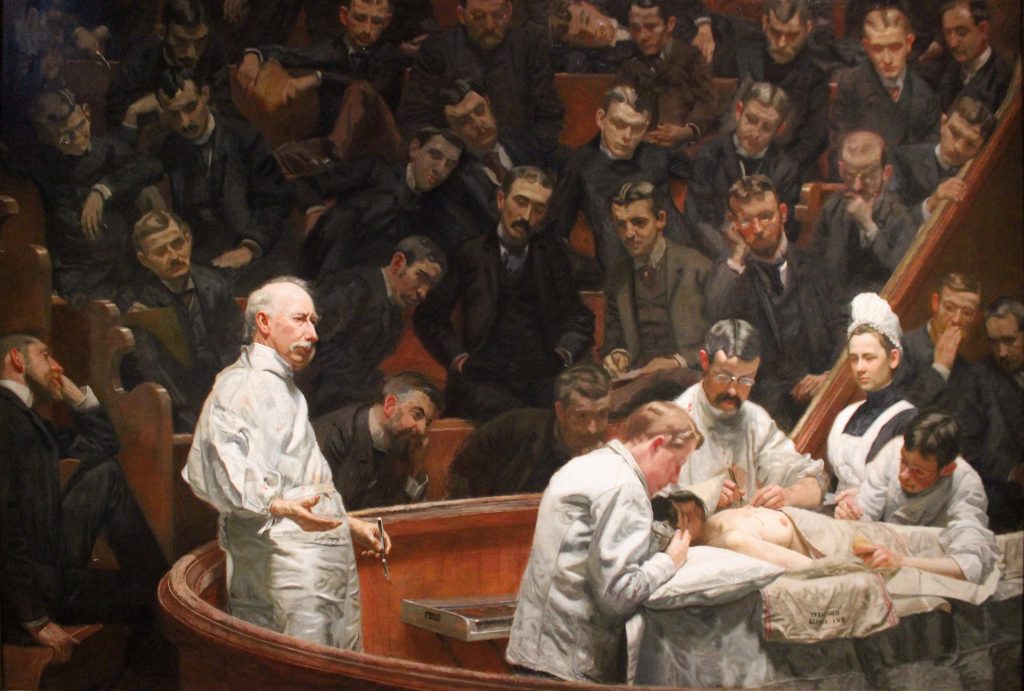
.
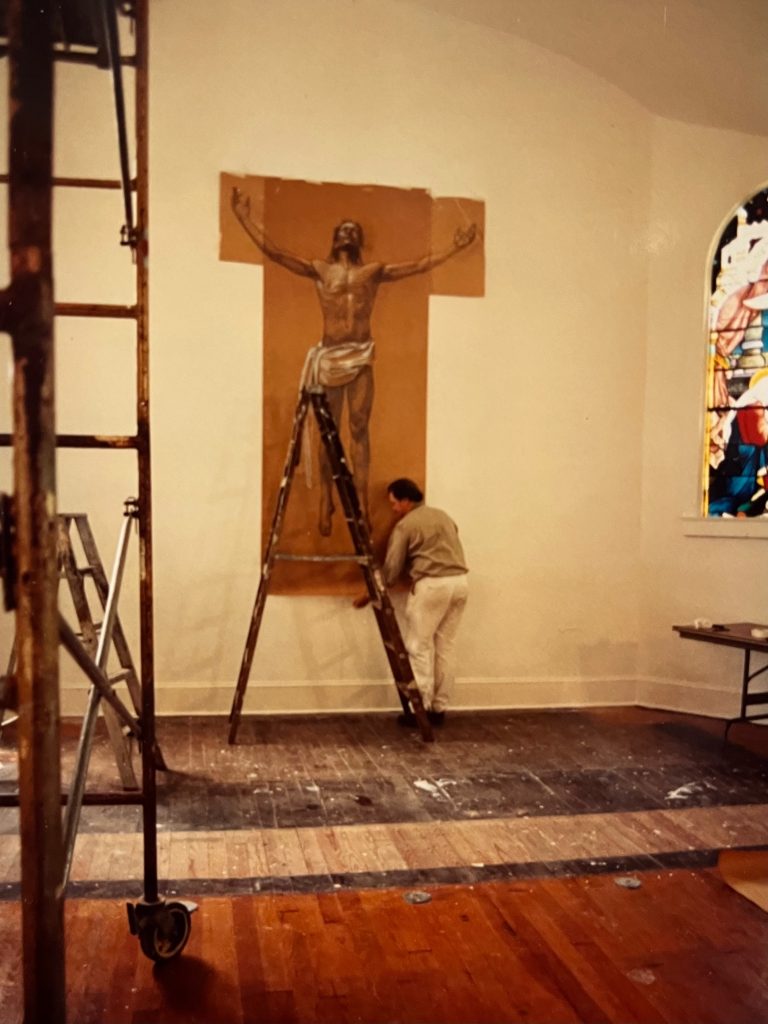
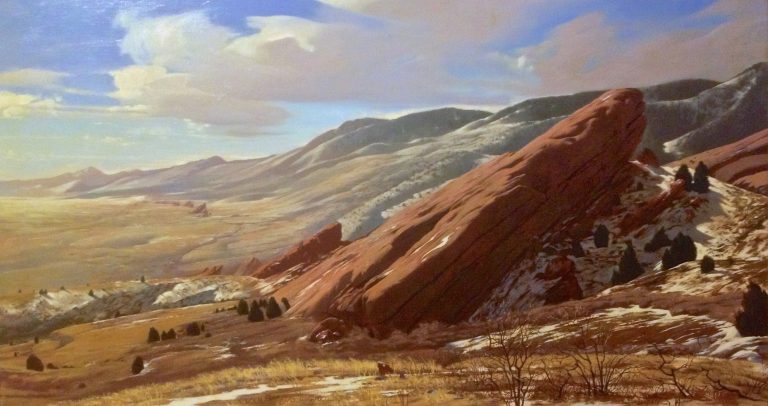

Thank you for sharing this Saskia. It is really impressive schlorship.
Thank you Laura- I’m so glad you enjoyed it !
The artist gave me direct approval in writing-but thank you for your concern.
s
Thanks so much for the blog post.Thanks Again. Great.
This is a beautiful, epic history of an artist of great genius and understanding, who worked hard to generously share his profound knowledge with his students and at the same time creating an enormous body of marvelous paintings. Indefatigable, always devoted to his art he continues to create beautiful paintings and will leave a huge inheritance for all who follow. We must carefully protect and show his work to the largest audience possible. Those of us who were lucky to have him as a teacher and friend will be forever grateful for his gifts to us. The solid and strong base he gave us allowed us to go beyond our own expectations. His enthusiasm and joy in his work was contagious. I’ll be forever grateful.
Thank you dear Patricia ! Your presence as an artist has always been a wonderful support for our mission. We hope to continue that mission with the same intensity in this new venture.
I remember admiring the pictures in Vincent Avenue in Metairie. Gwendolyn drove me in the elderly VW beetle on Sunday mornings to the boat and explained how to be the most junior member of the crew…
Greetings from Ian in Luxembourg.
and there is somewhere a newspaper picture of mother and daughter in September 1968 welcoming a foreign graduate student to New Orleans, the first of many delightful encounters…